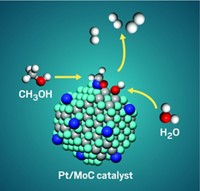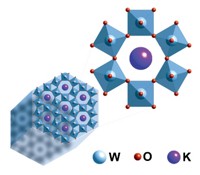Advertisement
Grab your lab coat. Let's get started
Welcome!
Welcome!
Create an account below to get 6 C&EN articles per month, receive newsletters and more - all free.
It seems this is your first time logging in online. Please enter the following information to continue.
As an ACS member you automatically get access to this site. All we need is few more details to create your reading experience.
Not you? Sign in with a different account.
Not you? Sign in with a different account.
ERROR 1
ERROR 1
ERROR 2
ERROR 2
ERROR 2
ERROR 2
ERROR 2
Password and Confirm password must match.
If you have an ACS member number, please enter it here so we can link this account to your membership. (optional)
ERROR 2
ACS values your privacy. By submitting your information, you are gaining access to C&EN and subscribing to our weekly newsletter. We use the information you provide to make your reading experience better, and we will never sell your data to third party members.
Materials
Encapsulation Protects Iron Catalyst
Sequestering Fe nanoparticles in peapod-type carbon nanotubes shields the metal from acid leaching in fuel cells
by Mitch Jacoby
December 24, 2012
| A version of this story appeared in
Volume 90, Issue 52
Encapsulating iron nanoparticles in pea-pod-like carbon nanotubes shields the metal from the harsh chemical environment common to fuel cells. Yet it leaves the particles free to catalyze reactions that are key to generating electricity, according to researchers in China (Angew. Chem. Int. Ed., DOI: 10.1002/anie.201204958). The finding suggests strategies for reducing the high cost of polymer electrolyte membrane (PEM) fuel cells by substituting inexpensive catalysts for platinum. Cost has been a major impediment to fuel-cell commercialization for electric cars. Researchers previously determined that some forms of iron can catalyze O2 reduction to water—the PEM fuel-cell cathode reaction—when the metal is fashioned as an electrode. Yet the acidic environment in those fuel cells and the presence of SO2 leach the metal and degrade performance, dashing hopes of exploiting inexpensive iron. Dehui Deng, Xinhe Bao, Xiulian Pan, and coworkers at Dalian Institute of Chemical Physics found a way to sidestep those problems. They report that cathodes made with the encapsulated Fe nanoparticles operate stably for several hours even in the presence of 10 ppm SO2. Reference cells generate higher electric current initially but begin to fail within minutes under those conditions, they say.




Join the conversation
Contact the reporter
Submit a Letter to the Editor for publication
Engage with us on Twitter